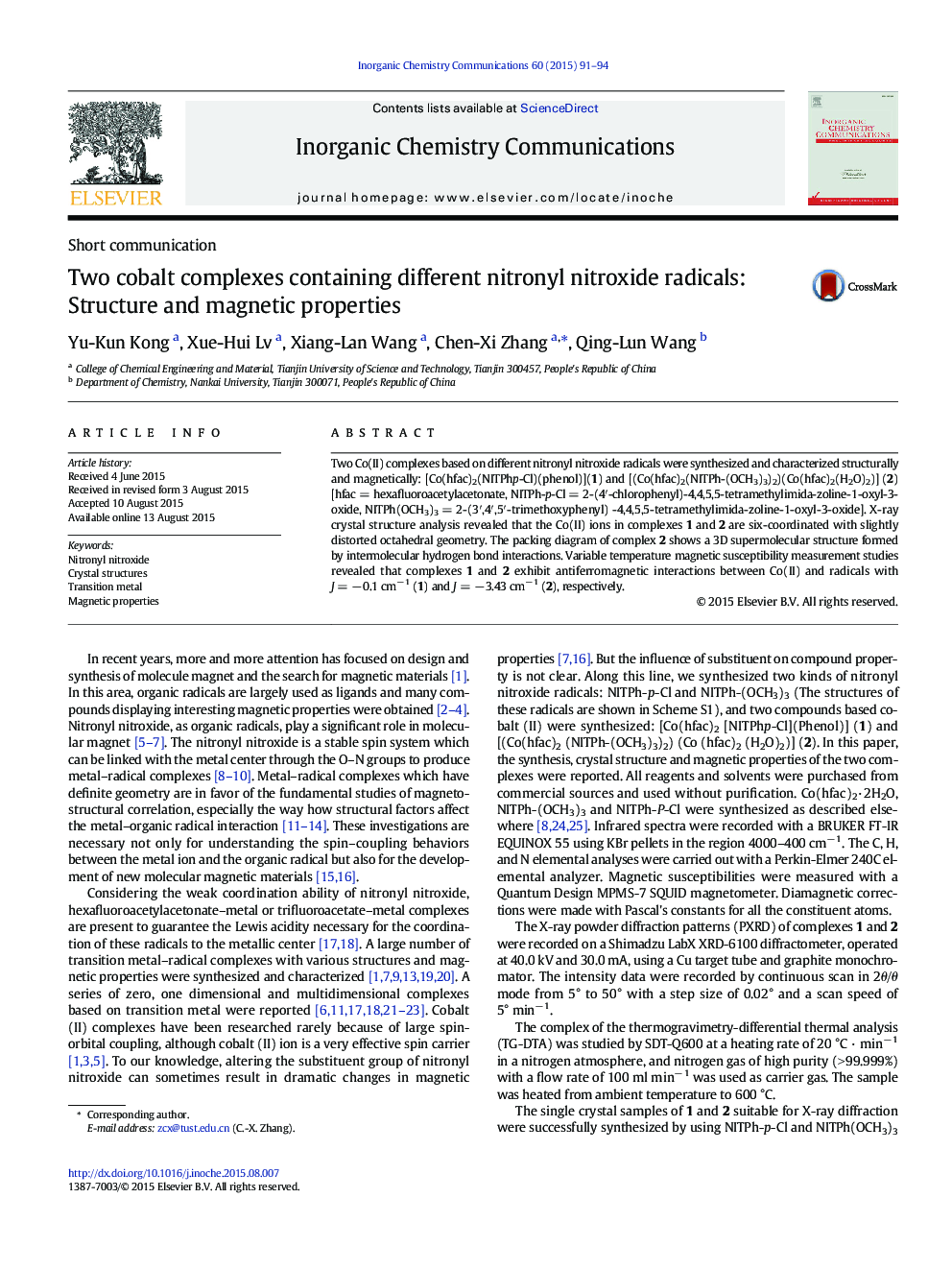| Article ID | Journal | Published Year | Pages | File Type |
|---|---|---|---|---|
| 1303352 | Inorganic Chemistry Communications | 2015 | 4 Pages |
•Two new Co(II) complexes based on different nitronyl nitroxide radicals were successfully prepared.•Two complexes are distorted octahedral geometry.•Hydrogen bond interactions play important role in complex 2 to form three dimensional structures.•Two complexes exhibit antiferromagnetic interaction,
Two Co(II) complexes based on different nitronyl nitroxide radicals were synthesized and characterized structurally and magnetically: [Co(hfac)2(NITPhp-Cl)(phenol)](1) and [(Co(hfac)2(NITPh-(OCH3)3)2)(Co(hfac)2(H2O)2)] (2) [hfac = hexafluoroacetylacetonate, NITPh-p-Cl = 2-(4′-chlorophenyl)-4,4,5,5-tetramethylimida-zoline-1-oxyl-3-oxide, NITPh(OCH3)3 = 2-(3′,4′,5′-trimethoxyphenyl) -4,4,5,5-tetramethylimida-zoline-1-oxyl-3-oxide]. X-ray crystal structure analysis revealed that the Co(II) ions in complexes 1 and 2 are six-coordinated with slightly distorted octahedral geometry. The packing diagram of complex 2 shows a 3D supermolecular structure formed by intermolecular hydrogen bond interactions. Variable temperature magnetic susceptibility measurement studies revealed that complexes 1 and 2 exhibit antiferromagnetic interactions between Co(II) and radicals with J = − 0.1 cm− 1 (1) and J = − 3.43 cm− 1 (2), respectively.
Graphical abstractTwo Co(II) complexes based on different nitronyl nitroxide radicals were synthesized and characterized structurally and magnetically: [Co(hfac)2(NITPhp-Cl)(phenol)](1) and [(Co(hfac)2(NITPh-(OCH3)3)2)(Co(hfac)2(H2O)2)] (2). X-ray crystal structure analysis revealed that the Co(II) ions in complexes 1 and 2 are six-coordinated with slightly distorted octahedral geometry. The packing diagram of complex 2 shows a 3D supermolecular structure formed by intermolecular hydrogen bond interactions. Variable temperature magnetic susceptibility measurement studies revealed that complexes 1 and 2 exhibit antiferromagnetic interactions between Co(II) and radicals with J = − 0.1 cm− 1 (1) and J = − 3.43 cm− 1 (2), respectively.Figure optionsDownload full-size imageDownload as PowerPoint slide
